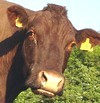New bovine compensation rates announced

DEFRA has published the first of its table valuations for animals compulsorily slaughtered for bovine tuberculosis, brucellosis and enzootic bovine leukosis (see table below for February’s rates).
The controversial table valuation system came in to effect on Wednesday (1 February) and the figures will be reviewed each month.
From 1 March the valuations will also apply to animals slaughtered for BSE.
The tables assign different values for non-pedigree stock using one month’s previous data and six months rolling data for pedigree stock depending on the animal’s age, sex and for female animals whether or not it has calved.
Presented by DEFRA as a fairer system that offers greater value to the taxpayer there is no route to appeal a valuation. DEFRA also hopes the category system will stem the spread of bovine TB by speeding the removal of infected animals from farms.
Certain categories of animals will still receive an individual valuation for a while longer – but that is only because DEFRA needs to gather more market data to come up with a compensation figure.
Junior DEFRA minister Ben Bradshaw said: “The new compensation arrangements would better protect the taxpayer, by addressing the serious ‘over-compensation’ problem identified by independent reviewers, promote good industry practice, and enhance disease control by facilitating the speedier removal of diseased animals.”
Table of non-pedigree Bovine Categories | |||
|---|---|---|---|
| Male | Female | ||
Beef sector | |||
| Age | Compensation due (£/head) | Age | Compensation due (£/head) |
| Up to 3 months | 110 | Up to 3 months | 67 |
| Over 3 months up to 6 months | 204 | Over 3 months up to 6 months | 138 |
| Over 6 months up to 9 months | 323 | Over 6 months up to 9 months | 255 |
| Over 9 months up to 12 months | 417 | Over 9 months up to 12 months | 328 |
| Over 12 months up to 16 months | 524 | Over 12 months up to 16 months | 409 |
| Over 16 months up to 20 months | 572 | Over 16 months up to 20 months | 478 |
| 20 months and over | 655 | 20 months and over | 560 |
| Breeding bulls 20 months and over | * | Calved | 532 |
Dairy sector | |||
| Age | Compensation due (£/head) | Age | Compensation due (£/head) |
| Up to 3 months | 13 | Up to 3 months | * |
| Over 3 months up to 6 months | 78 | Over 3 months up to 6 months | * |
| Over 6 months up to 12 months | 209 | Over 6 months up to 12 months | * |
| Over 12 months up to 16 months | 423 | Over 12 months up to 16 months | * |
| Over 16 months up to 20 months | 466 | Over 16 months up to 20 months | 375 |
| 20 months and over | 488 | 20 months and over | 608 |
| Calved | 706 | ||
Table of pedigree Bovine Categories | |||
| Male | Female | ||
Beef sector | |||
| Age | Compensation due (£/head) | Age | Compensation due (£/head) |
| 6 months up to 12 months | * | 6 months up to 12 months | * |
| Over 12 months up to 24 months | 3,410 | Over 12 months up to 24 months | 1,261 |
| Bull 24 months and over | * | 24 months and over (not calved) | 1,434 |
| Calved under 36 months | 1,441 | ||
| Calved 36 months and over | 1,236 | ||
Dairy sector | |||
| Age | Compensation due (£/head) | Age | Compensation due (£/head) |
| Up to 2 months | * | Up to 2 months | 436 |
| Over 2 months up to 12 months | * | Over 2 months up to 10 months | 462 ** |
| Over 12 months up to 24 months | 1,330 | Over 10 months up to 18 months | 834 |
| Bull 24 months and over | * | Over 18 months not calved | 888 |
| Calved under 36 months | 1,195 | ||
| Calved 36 months and over | 1,056 | ||
* Compensation to be determined using individual valuation | |||
** Previously ascertained market price | |||
** Where the Secretary of State considers that the sales data for any particular bovine category in any given month are inadequate, or such price data is unavailable, the compensation payable will either be at the level of the most recently ascertained value for the same category or she may opt to pay compensation at the level of the market value of the animal in question, as ascertained under the Individual Ascertainment of Value (England) Order 2005. A statistical analysis of sales data collected during a twelve months period has helped Defra identify the level of variability in sales prices (for each category). This intelligence is used to determine when there is insufficient data to support a table valuation.
